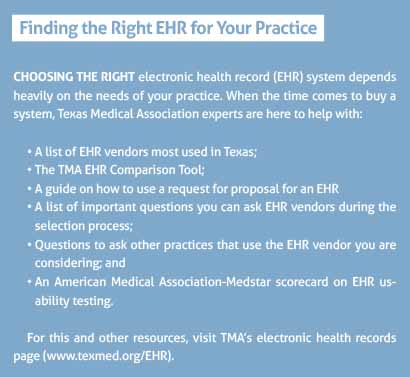
San Antonio endocrinologist Aruna Venkatesh, MD, often finds herself torn between patient care and paperwork.
From documentation and coding to electronic health record (EHR) management, she laments that all her free time is consumed with administrative tasks.
“My charts always come first, because my patients always come first,” she said. “But that leaves me with less time treating patients, and even less time to myself. Some days it feels like I’m working longer hours than when I was in medical school, and many of my colleagues feel the same way.”
A March 2019 survey by CompHealth and the American Academy of Family Physicians found that 71% of physicians reported administrative burden as one of the top causes of unhappiness on the job and one of the greatest distractions from patient care.
Similarly, a February 2023 study by the Agency for Healthcare Research and Quality found administrative tasks are linked to increased physician burnout rates, especially among primary care physicians.
The problem often is exacerbated by EHRs, says Dr. Venkatesh, who spends hours “staring at a screen” instead of treating patients.
“Almost every physician uses an EHR, which means almost every physician is spending time completing tasks separate from patient care,” she said. “I’m working on EHR tasks in the office and at home, meaning I don’t get a break. We spend hours online and yet still have the same documentation volume as before widespread EHR use.”
Although EHRs were once considered a way to streamline documentation, TMA’s 2023 Health IT Survey found that four in 10 physicians saw adverse impacts on patient safety or care quality due to an EHR, citing too much data that obscured important information or interfered with the patient-physician relationship.
Moreover, the U.S. Department of Health and Human Services reports that for every hour of direct patient care, physicians spend two hours on their EHR.
Although Dr. Venkatesh acknowledges electronic communication has its advantages, she believes the many notifications, requests, lab results, and direct messages from patients within her EHR inbox – or “in-basket” – contribute to burnout.
“I spend most of my administrative days just trying to catch up on EHR work,” she said. “I worry that when EHR tasks are combined with paperwork and other administrative burdens, the diagnosis for physician wellness is dire.”
Fortunately, physicians can take steps to reduce the myriad bureaucratic burdens driving physician burnout.
“Resources that prioritize the well-being of physicians are desperately needed,” said Chris Kean, chief operations officer at TSAOG Orthopaedics & Spine. “We need to change physicians’ workflow so we can focus on what matters most – patient care.”
Tackling inbox overload
As she oversees the daily operations within her medical organization, Ms. Kean finds that a bursting inbox often is to blame for high physician burnout.
“There are so many messages and alerts physicians must wade through in their inbox. It’s very difficult,” she said. “What are they supposed to look at first? Where’s the most important thing they need to respond to? And the answer to those questions could be in different places across the EHR.”
Shannon Vogel, the Texas Medical Association’s associate vice president of health information technology, suggests physicians share inbox management across the practice by authorizing a common in-basket where the care team can triage messages so that physicians are not burdened with messages that others on the team can handle.
“Make sure the EHR is working for you by always looking for ways to optimize and automate EHR processes,” she said. “This could be through training vignettes on the EHR vendor’s site or by conducting staff team meetings and sharing new tips and tools.”
Dr. Venkatesh has her own solutions. She says allocating dedicated time in the day to address the EHR inbox without productivity penalties would be a good start. She’s working through organized medicine to create a pathway for physicians to get paid for time spent on after-hours documentation – which she calls “pajama work” – having submitted a resolution on the topics at last year’s TexMed that is now under study.
“We need a systemic overhaul to fix this issue,” she said. “Organizations like TMA are just the bodies to fight for that overhaul. But it will take widespread change to see results.”
While TMA works with Dr. Venkatesh and her colleagues to provide EHR relief, other organizations are starting to address EHR-specific solutions to inbox burden in their own way, according to the American Medical Association’s resource “A System-Level Approach to EHR Inbox Reduction,” which offers guidance for reducing and streamlining inbox burden on physicians.
For instance, Boston’s Atrius Health automated prescription renewals – setting up a protocol that doesn’t require a primary care physician to sign each approved medication reauthorization – to reduce inbox volume of renewals by 50%. Before the change, prescription renewal requests made up 16% of the total inbox message volume, which was about 16 requests per physician daily.
Additionally, the Medical Associates Clinic in Dubuque, Iowa, redelegated inbox tasks to nurses paired with a physician, allowing them to address medical advice requests within their scope, renew medications by protocol, and perform the first review of laboratory results – a solution Ms. Kean endorses.
“Doctors can’t be everywhere, and finding the right person to delegate tasks [to] can greatly decrease the burden placed on a physician’s shoulders,” she said.
Among other tips, the AMA program recommends practices:
- Develop a strategic framework to target inbox reduction and “get rid of stupid stuff,” or GROSS, by eliminating unnecessary messages before they hit the inbox;
- Develop protocols so that a team member – such as a medical assistant or nurse – can handle prescription renewal requests; and
- Delegate remaining inbox triage.
“Inbox overload can be reduced through good practice policies and procedures and care team involvement. It takes time, but it can be done,” Ms. Vogel said.

Prevailing over prior auth
Yet another source of relentless frustration among physicians and staff members is the rising number of services and medications that require prior authorizations from payers.
Even after the passage of Texas’ “gold card” law in 2021 – which other states and national payers have indicated they, too, will implement – 94% of physicians still reported care delays while waiting for payers to authorize necessary care, and 80% said prior authorization led patients to abandon treatment, according to a 2022 AMA survey.
“When prior authorization requests are denied, physicians spend hours, sometimes late into the day, working with payers to get medication to their patients. The work never stops,” Dr. Venkatesh said.
Knowing the stakes, TMA consulting experts like Heather Bettridge, associate vice president of practice management services, compiled a list of practical tips for practices to streamline prior authorizations.
TMA experts recommend practices complete some prior authorization work up front by:
- Contacting health plans to ask if hospital authorizations will cover physicians’ services or if a practice needs to submit a separate authorization, or to understand the time frame to submit a request.
- Creating a list of 10 to 15 service codes most likely to require prior authorization, with details about where to get submission instructions and where to submit prior authorization requests. If the information is available, note how long it takes to obtain the approval so you have an idea of when to submit it.
- Understanding the revenue cycle and ensuring the practice adheres to contract provisions, patients are eligible, and the practice follows general claims processing guidelines.
- Reviewing all relevant medical policies and requirements before submitting the service for approval.
- Keeping in mind that even if you’ve obtained prior authorization, payment is not guaranteed. If your prior authorization requests are denied because of a lack of medical necessity, make sure your medical record documentation is detailed enough to paint a picture of the reason for the service.
Ms. Kean adds practices should maintain a relationship with insurance carriers to communicate where the payers could do better and to advocate with lawmakers and patients when appropriate.
“Practices are at the mercy of insurance regulations, but practices can push for communication from insurers and work with organizations like TMA to advocate for changes,” she said. “At the office level, physicians can involve their patients because they’re the ones affected by prior authorization delays the most. Give them the power to put pressure on insurers as well.”
Ms. Bettridge added: “Prior authorization is a large burden for practices, but with simple tricks, some of that burden can be reduced – and hopefully, with it, burnout is reduced as well.”
TMA’s practice management consultants are here to help identify what’s causing burnout and how widespread it is within a practice, and to offer solutions.
This can look like automating processes such as check-ins, payment platforms, and scheduling, Dr. Ventakesh says.
Or it can look like taking a holistic approach to redesigning work systems to prevent and reduce burnout while also fostering the well-being of staff members, says Ms. Kean, who suggests practices support staff members outside of the office.
“We need to start providing a ‘whole patient’ approach to our staff. That’s child care, that’s comprehensive benefits and sick days, counseling sessions,” she said. “We need to support each other like we support patients.”
From there, practices can implement changes that reinvigorate a health care team.
“We need to lift each other up to fight this issue,” Ms. Kean said. “That starts by offering systematic support. But I believe we can do it.”